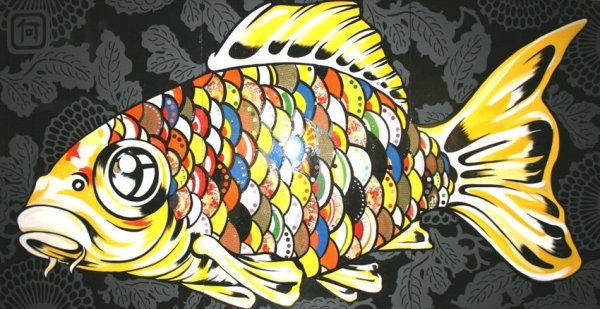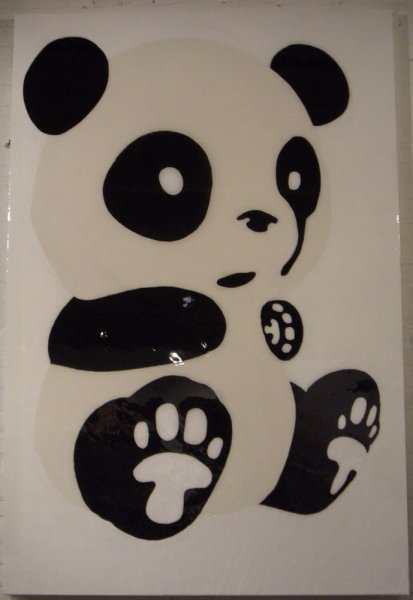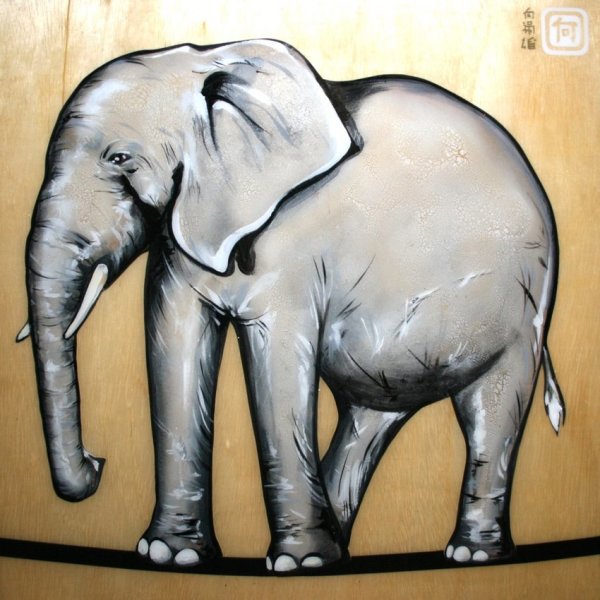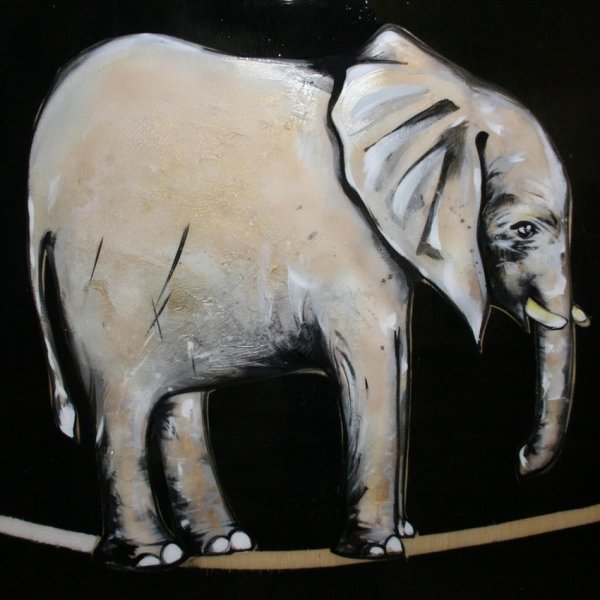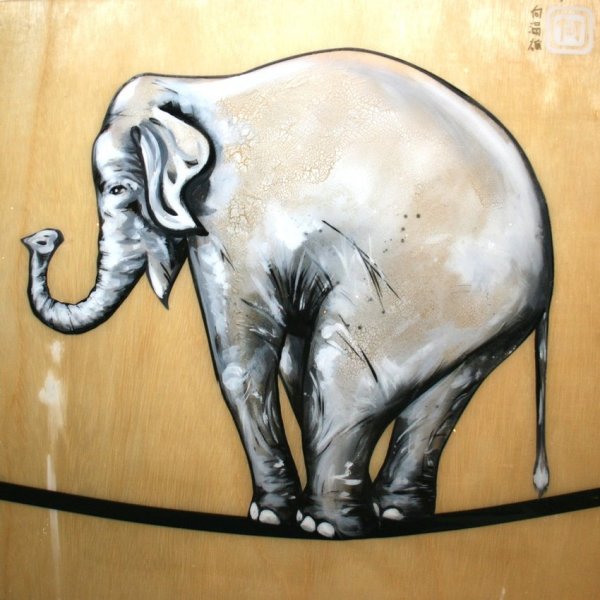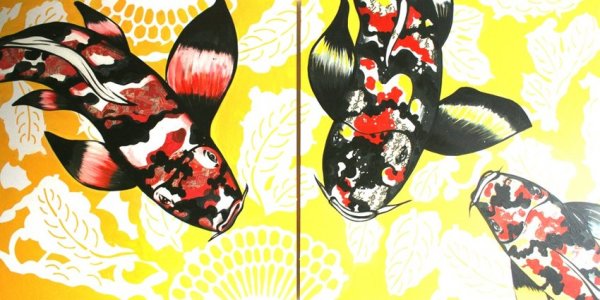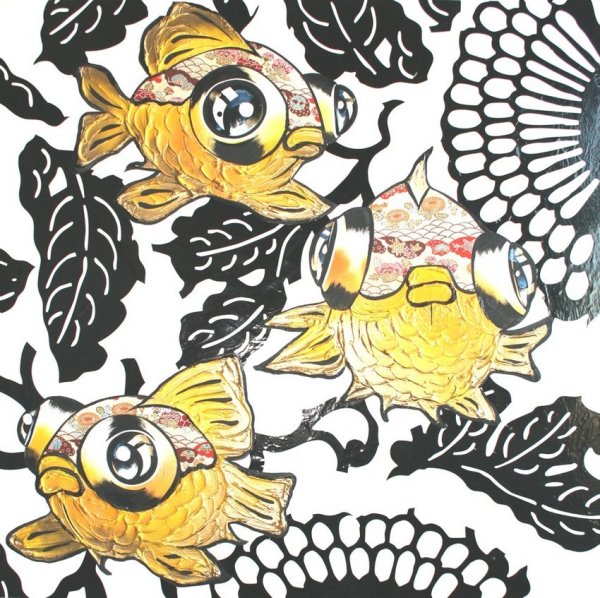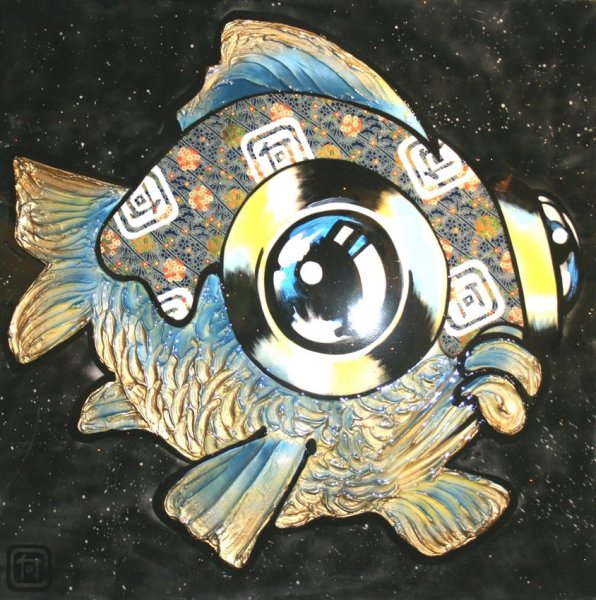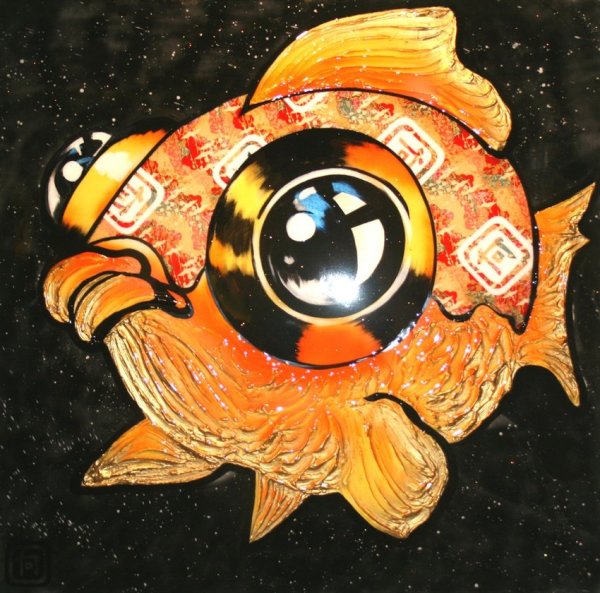Ha's work is a fantastic amalgam of flattened, highly graphic visual techniques and vibrant coloration. He disorients the viewer by bringing him into the proverbial fish bowl. His dual Asian-American experience oscillates between the formal techniques of Western Op-art and conventional East-Asian block prints.
Fishes embody the concept of prosperity and good luck. Chinese and Japanese emperors, through the centuries, had collected them to benefit from their positive power. Ha emphasizes the desire to have those animals. As a Chinese custom, fishermen would be looking for the most elegant, beautiful and colorful fishes. The more precious they are, the more energy they will give to their owner.
The Giant International Koi has its unique scales enriched by numerous flags witnessing the long journey through which it has gained its experience and has evolved its spiritual energy. It is, therefore, not only a symbol of prosperity but as well a symbol of freedom.
The Ichi Fish incorporates Ha's Eastern roots with American literature for children. He refers to Marcus Pfister book, The Rainbow fish (1998). In this novel a Gold fish, the most beautiful in the ocean, realizes that the perfect beauty of its magical scales keeps it isolated. He is alone, questioning himself about friendship. He decides to share its scales, made of gold and diamonds, with the other fishes. He gifts them in order to be accepted. Ha, with his mixed media technique, represents the Ichi Fish after this noble and magnanimous process by enriching only partly its scales. The Giant Orange Koi is as well influenced by Pfister's novel and the value of a shared prosperity.
In his vast Koi series, the artist considers the various interactions between the fishes and the viewer, by emphasizing their eyes and their position into the aquarium space and time.
From a bird-eye-view into the pond, some fishes are moving upwards. They are willing to grow and, for that reason, they symbolize prosperity. Fishes, moving downwards, are perceived in a more intimate atmosphere because viewers feel involved in the act of hypothetically feeding them.
The Nine Emperor's fishes refer to the lucky number of the fishes that were in every Chinese emperor aquarium. The most beautiful nine fishes that they were gifted.
The Cosmic Fishes are reproduced in their act of jumping outside the water projecting themselves into the cosmos. Ha is reflecting on their desire of freedom. The fishes are shaped in a caricature japanimation style, which the artist uses to stress their fight against the limitation of their nature and the impossibility of their aspirations.
This concept of challenging natural forces is evocated in Ha's Baby Elephant series. He represents the animals, symbols of wisdom and strength, in an unreal situation where they struggle to keep themselves balanced on a tight rope. The young elephants, on their path to enlightenment and mature accumulated knowledge, are bravely challenging impossibilities in nature. The artist positively states that everything is possible, while placing the young elephants on a meditative space evocated by the natural wood background.
Pandas, according to Chinese scripts, protect the owner from evil. Ha portrays the endangered animal with surrealistic simplicity. It is a powerful image since the Panda is not concentrating on his instinctive needs, such as eating, but on his objective of protecting his owner from evil spirits.
Ha's latest Diamond Optic Series meditates on the presence of a universal exact order into each individual life as well as into the urban environment. The artist, through a geometrical abstraction, investigates the precise placement of the structure that frames human interaction. He recalls M. C. Escher's work and Q*bert arcade game. The geometric repetition and the intricacy of the grids evoke the colorful scales of the fishes. Ha's metaphysical analysis is mysteriously alluring. Light boxes make these architectures alive.
Essay by Fabiana Marenghi Vaselli
John Hung Ha was born in Saigon, Vietnem in 1978 to a Vietnamese mother and a Chinese father. He studied Graphic Design at the Memphis College of Art, and in 201 he received a BFA from the Rhode Island School of Design in Printmaking. He has exhibit his work all over the United States in such cities as Los Angeles, CA, Hilton Head, SC, Nashville, TN, Providence, RI, New York City, NY, and others. He is currently working at Seigel Studios NYC in Brooklyn, New York, as well as exhibiting regularly.
